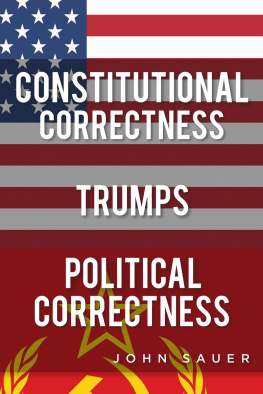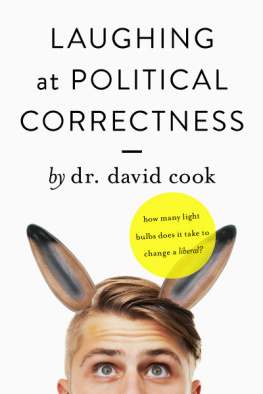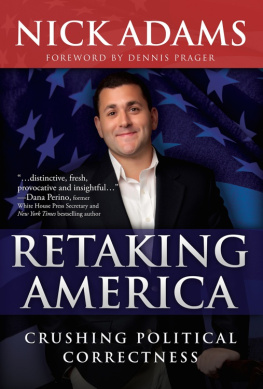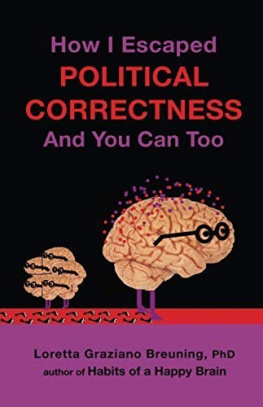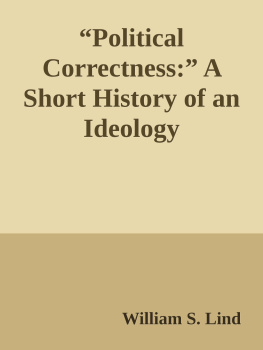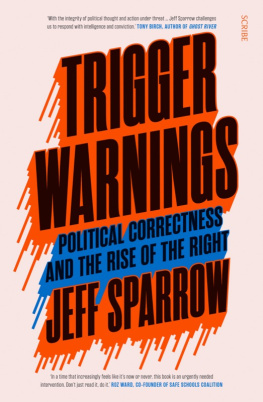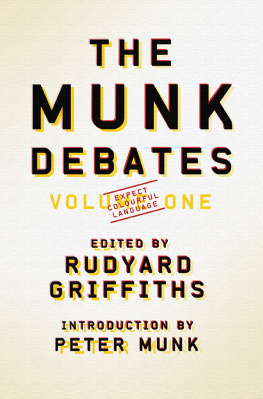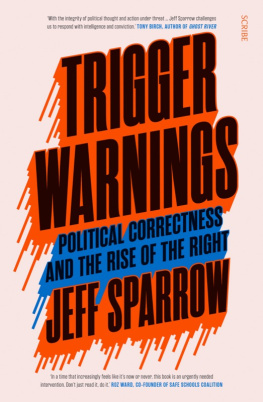Constitutional Correctness Trumps Political Correctness
John Sauer
Copyright 2020 by John Sauer
All rights reserved. No part of this publication may be reproduced, distributed, or transmitted in any form or by any means, including photocopying, recording, or other electronic or mechanical methods without the prior written permission of the publisher. For permission requests, solicit the publisher via the address below.
Christian Faith Publishing, Inc.
832 Park Avenue
Meadville, PA 16335
www.christianfaithpublishing.com
Printed in the United States of America
Table of Contents
Prologue
The American Revolution began in 1775 as an open conflict between the thirteen British colonies in America and Great Britain and ended in 1783. The Articles of Confederation was established in 1781 and served as a bridge between the initial government by the Continental Congress of the revolutionary period and the federal government which was established by the US Constitution. The United States Constitution was signed off in 1787. Since 1775, 1,319,943 American lives were lost due to wars. These soldiers died liberating the American colonies from England and establishing the sovereignty of the thirteen colonies, fighting the civil war to establish the essence of the United States and defending the United States against all enemies challenging its sovereignty and threatening its colonies and allies .
Forty percent of Americans still worked on farms in 1900, but an equal number lived in cities. And by this time, America had surpassed England as the leading industrial nation on earth. The forces responsible for these sweeping transformations were gathering as the 19th century began. The American Revolution broke the back of state-regulated mercantile capitalism and opened the way for a market revolution that produced the worlds most dynamic economic system.
We call it political correctness. The name originated as something of a joke, literally in a comic strip, and we tend still to think of it as only half-serious. It is the great disease of our century, the disease that has left tens of millions of people dead in Europe, in Russia, in Chinaindeed around the world. It is the disease of ideology. Political correctness is not funny. Political correctness is deadly serious.
Political correctness originated in World War I as cultural Marxism and is defined by giving power to the victim class based on race, sex, etc. over the majority.
A Marxist begins with his prime truth that all evils are sourced in the exploitation of the proletariat by the capitalists. From this he logically proceeds to the revolution to end capitalism, then into the third stage of reorganization into a new social order of the dictatorship of the proletariat, and finally the last stagethe political paradise of communism.
Just as in classical economic Marxism certain groups (i.e. workers and peasants are good, and other groups, i.e., the bourgeoisie and capital owners, are evil). In the cultural Marxism of political correctness, certain groups are goodfeminist women (only feminist women, non-feminist women are deemed not to exist), blacks, Hispanics, homosexuals. These groups are determined to be victims and therefore automatically good regardless of what any of them do. Similarly, white males are determined automatically to be evil, thereby becoming the equivalent of the bourgeoisie in economic Marxism.
The Black Book of Communism , compiled and edited by Stphane Courtois from the work of several academics, was published in France in 1999 (). It is a harrowing account of the crimes of practical communism under regimes such as the USSR, China, Cambodia, North Korea, and those of several African, Latin American, and European countries. It summarizes the death toll as follows:
U.S.S.R. | 20 million deaths |
China | 65 million deaths |
Vietnam | 1 million deaths |
North Korea | 2 million deaths |
Cambodia | 2 million deaths |
Eastern Europe | 1 million deaths |
Latin America | 150,000 deaths |
Africa | 1.7 million deaths |
Afghanistan | 1.5 million deaths |
This adds up to just north of ninety-four million, covering the period 1914 to 1991.
It is important to note that these numbers do not include all deaths, and in particular, do not include deaths due to unsafe drinking water, hunger, or disease. The Black Book authors counted only the deaths attributable to crimes by the state against the people, such as deliberate massacres by Communist regimes or formal policies that directly led to large-scale deaths such as Maoist Chinas great leap forward.
According to a disturbingly pleasant graphic from Information is Beautiful entitled simply
In 2017, Professor
The Communist Manifesto is an 1848 political pamphlet of Karl Marx and Friedrich Engels theories concerning the nature of society and politics, that in their own words, The history of all hitherto existing society is the history of class struggles. It also briefly features their ideas for how the
In the United States, over fifty-eight million babies (18 percent of the population) were aborted under the protection of Roe vs Wade Supreme Court ruling handed down in 1973. The percentage of deaths of the American citizens that this court ruling legalized greatly exceeds the number of deaths occurring in the expansion of communism in China (approximately .65 percent of Chinas population) since Mao Zedong led a revolution and the Communist party obtained control in 1947 .
The math in the Roe vs Wade and Communist China deaths are for comparative purpose only spanning the lifetime of each ideology. The comparative numbers do not consider the propagation of the populations that did not occur due to the killings.
While addressing Westerners at the embassy on November 18, 1956, in the presence of Polish Communist statesman Wadysaw Gomuka, First Secretary Khrushchev said: About the capitalist states, it doesnt depend on you whether or not we exist. If you dont like us, dont accept our invitations, and dont invite us to come to see you. Whether you like it or not, history is on our side. We will bury you! The speech prompted the envoys from twelve NATO nations and Israel to leave the room.
During Khrushchevs visit to the United States in 1959, the Los Angeles mayor Norris Poulson in his address to Khrushchev stated:
We do not agree with your widely quoted phrase We shall bury you. You shall not bury us and we shall not bury you. We are happy with our way of life. We recognize its shortcomings and are always trying to improve it. But if challenged, we shall fight to the death to preserve it.
As nouns, the difference between progressivism and socialism is that progressivism is a political ideology that favors progress towards better conditions in society and ultimately the fulfillment of Karl Marxs communism predictions while socialism is the intermediate phase of social development between capitalism and full communism in Marxist theory in which the state has control of the means of production .
As noted above, the US birth rate has been declining slowly over the last several decades. Today, the US fertility rate needed to maintain the current US population is 2.1 children per woman during her lifetime. Yet it now stands at only 1.9 and is falling, so were going backward.

